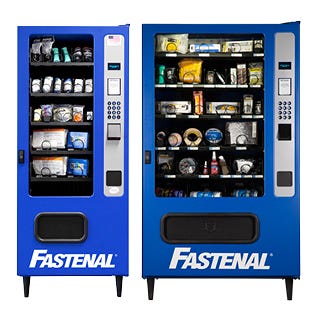Economic Moats Explained: What They Are & Why They Matter - Part VI
The conclusion of a six-part series on economic moats
For the final part of this series, we’ll explore how management impacts moats.
I hope you’ve enjoyed this series. Please subscribe below to stay up to date on the latest Flyover Stocks content.
Part I: Why Care About Moats?
Part II: Moat Sources
Part III: Moat Width
Part IV: Moat Depth
Part V: Moat Trend
Part VI: How Management Impacts the Moat (today’s post)
If you have a castle in capitalism, people are going to try to capture it. You need two things – a moat around the castle, and you need a knight in the castle who is trying to widen the moat around the castle. - Warren Buffett
Ten years ago, I served as Morningstar’s head of equity stewardship, which meant it was my job to think about the confluence of moat and management.
Prior to taking the role, most of my management research was focused on governance. I asked questions like “Is the board independent?” and “Are the chairman and CEO roles held by the same person?”
Governance is important, of course, but long-term investors are primarily concerned with how management allocates capital and sets the business’s cultural tone.
In other words, is management acting as good stewards of shareholder capital?
Having a stewardship mentality means setting the company up for success beyond your tenure. In turn, this means widening the company’s economic moat while you’re in charge.
Understanding
Naturally, widening the moat first requires management to understand the sources of the company’s economic moat.
After many conversations with company management, I can tell you that this is not always a given.
As such, it’s our job as investors to look for signs that management “gets it.”
Here are a few examples:
Fastenal, July 2008 earnings call (then-CFO, now CEO Daniel Florness speaking):
Where we can straighten out the line of where that product flows, everybody knows the shortest distance is a straight line. We can lower our costs and have a competitive advantage and improve our margin and improve the value we provide to our customer…
Because when you get down to it we’re hauling a gob of steel at relatively low value per pound product around a very large continent and we can do it more cost effectively than anybody. Getting back to that whole concept of alternative A or alternative B, alternative B, which is Fastenal trucking, has a 10-to-1 cost advantage. I can’t make that point enough.
Netflix, July 2009 earnings call (Reed Hastings speaking):
The streaming initiative, we get a couple of wins out of that in terms of retention, acquisition, DVD usage substitution. And strategically, when you think of low price as a great competitive weapon, if we can -- competitive moat, if we can get a very large subscriber base with aggressive price, it's harder to attack our franchise. So we're continuing to look for ways of which we can grow the subscriber base even faster, on the lower prices by, for example, emphasizing our lower-price plans.
Meta (then-Facebook), July 2012 (Mark Zuckerberg speaking):
Growing the network of people who use Facebook and expanding the social experiences available to them remains the foundation of our efforts and the key to our future success.
Additional sources for evaluating management’s moat aptitude are direct conversations (ideally more than one and in different settings), speaking with former employees, and perusing third-party interviews.
Actions
Once we know that management understands the moat at a deep level, then the question becomes, “What actions are they taking to widen it?”
There are two primary ways that management impacts the moat: capital and culture. When both are done well, the moat widens; when they’re not done well, the moat narrows.
Capital is the more externally recognizable factor to research. We can, for instance, observe how management allocates capital expenditures to different segments, track unit economics, and review M&A decisions.
Ideally, management will direct capital toward strategies that will make the company harder to compete against. Using one of the examples above - in fact, shortly after the comment was made in the earnings call - Fastenal launched its on-site industrial vending machines program in 2009.
This program, which today counts over 100,000 installed units, extended Fastenal’s transportation cost advantage by putting inventory closer to the customer - literally on the shop floor - and reducing the need for just-in-time and emergency deliveries.
Good luck to any would-be competitor trying to compete with Fastenal on delivery costs.
As an outside investor, culture can be more challenging to monitor. Every human organization has a belief system: what it stands for, how it operates, what it won’t tolerate, etc..
Management - specifically the CEO - is the standard bearer of this belief system at a corporation, and the more closely linked the company’s culture is to the economic moat, the more important it is for investors to understand it.
When I started my career at Vanguard, for example, every employee knew that the company’s founder, Jack Bogle, flew coach when he traveled. It set the cultural tone that every cost mattered if Vanguard was to deliver the lowest costs to its funds’ shareholders. If you were a middle manager, the thought of upgrading to business class wouldn’t have even crossed your mind.
Legend has it that a Costco merchandise buyer once presented co-founder and CEO Jim Sinegal with an opportunity to take a larger markup than the company’s standard 14% on some discounted jeans. Sinegal refused, saying, "I let you do it this time, you will do it again.”
Costco’s moat is rooted in the “scale economies shared” concept as labeled by investor Nick Sleep. Costco offers members a flat markup on bulk items, which in turn drives traffic and membership sales, which in turn strengthens Costco’s bargaining power with suppliers, which creates lower inventory costs, which results in better prices for Costco members, and the cycle repeats.
Sinegal’s quote set a cultural tone that at Costco short-term gains are not to be made at the expense of member trust. Otherwise, the entire system will begin to unwind and eventually fail.
Castle walls
A great civilization is not conquered from without until it has destroyed itself from within.
– Ariel Durant
Having studied the confluence of moat and management for some time, one of the conclusions I’ve reached is that moat erosion usually starts behind the castle walls.
This might seem counterintuitive, as most research around competitive advantage evaluates external threats. We’ve all learned the classic broken moat examples like Blackberry and Kodak where technological disruption led to their undoing.
Looking beneath the surface, however, broken moat stories usually have existing internal cultural rot - complacency, departure from core values, etc. - that enabled the moat attack to be successful in the first place.
For example, in the 2010s, Time Warner had an opportunity to take on Netflix as the latter ramped up its spending on streaming video and technology. However, that would have required Time Warner to change its generous dividend and share repurchase practices and reinvest the capital. Instead, between 2015 and 2017, Time Warner returned $9.6 billion to shareholders in the form of dividends and buybacks.
Unsurprisingly, a few years earlier, Time Warner’s CEO quipped about the upstart Netflix: “It’s a little bit like, is the Albanian army going to take over the world?”
AT&T would acquire Time Warner in 2018 only to spin it back out a few years later for a fresh - and now late - attempt to battle Netflix.
To be sure, Netflix was a formidable and innovative competitor in the 2010s, but Time Warner’s cultural dismissiveness and unwillingness to change only hastened its ascendancy.
As discussed in this video post, quality traps - where quality company fundamentals deteriorate, creating a double whammy of slowing earnings growth and multiple compression - lead to impaired capital. Consequently, investors in quality businesses must always be on the lookout for signs of internal rot as it can lead to an opportunity for a successful moat attack from a competitor.
Bottom line
Though management itself cannot be an economic moat source, management’s capital allocation decisions and cultural tone can have a material impact on the company’s economic moat.
As much as I enjoy quotes like Buffett’s “a ham sandwich could run Coca-Cola” or Peter Lynch’s “Go for a business any idiot can run - because sooner or later, any idiot is probably going to run it,” and understand what they mean (and don’t mean), no company is immune from the effects of poor allocation and cultural rot.
As you think about a company’s moat, then, pay attention to the ways in which management is supporting or undermining it.
Stay patient, stay focused.
Todd
Todd Wenning is the founder of KNA Capital Management, LLC, an Ohio-registered investment advisor that manages a concentrated equity strategy and provides other investment-related services.
At the time of publication, Todd, his immediate family, and/or KNA Capital Management, LLC own shares of Costco.
Please see important disclaimers.



